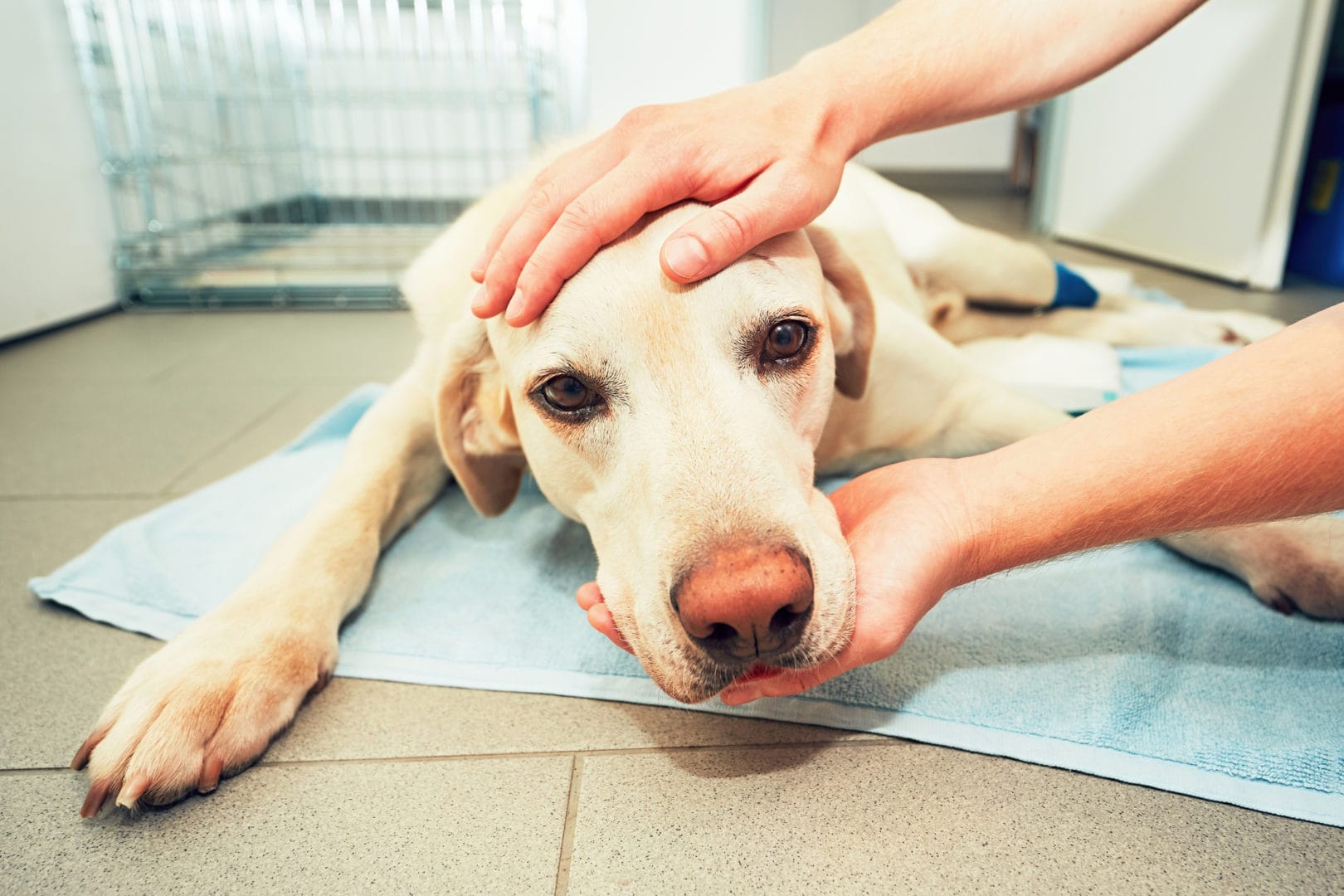It’s rare when the words “stroke” and “scary” don’t appear in the same sentence. That’s why it’s important for dog owners to know the symptoms of a dog stroke and how to move forward with treatment.
A sudden loss of balance and a head tilt are just some of the signs, but strokes take scary one step further by mimicking other health issues, such as kidney failure and more.
Your veterinarian is your best resource for determining whether your dog has had a stroke and can help put you both on the path to recovery. Read on for answers to common questions about stroke symptoms, causes and more.
What is a stroke?
You’ve heard the word a thousand times but it’s helpful to understand exactly what is happening in your dog’s body when a stroke occurs. A stroke is a sudden death of brain cells in a localized area due to a lack of blood flow, says Dr. Carol Osborne, a veterinarian with the Chagrin Falls Veterinary Center and Pet Clinic in Chagrin Falls, Ohio. Most frequently, a blood clot is to blame. But a stroke can also occur if a piece of fat, cartilage or bacteria breaks loose in another part of the body and circulates to the dog’s brain, says Osborne.
What are common symptoms of a stroke in dogs?
-
Loss of balance
-
Head tilting
-
Abnormal eye movements
-
Vomiting
-
Loss of appetite
These are all things you might see if your dog has suffered from a stroke. Your pup’s “eyes might flicker quickly from side to side, kind of like watching a tennis match,” Osborne explains. These symptoms have to persist for more than 24 hours for your pet’s condition to be classified as a stroke, she adds, but you shouldn’t wait that long to visit the vet. The faster you see a vet, the better.
What can make diagnosis tricky is that symptoms of a stroke can mimic those of other health issues, such as vertigo, kidney failure, an inner ear infection, a brain tumor or a seizure. The professionals will need to rule out these issues by performing a series of tests.
“A stroke can’t be determined 100 percent without imaging,” says Dr. Todd Bishop, a neurologist with Upstate Veterinary Specialties in Latham, New York. “An MRI is best.”
What causes a stroke?
In about 50 percent of cases, says Dr. Evelyn Galban, Chief of Neurology and Neurosurgery at the University of Pennsylvania School of Veterinary Medicine, dogs that have strokes will have an underlying or concurrent condition.
“These conditions can include systemic diseases: Cushing’s disease, hyperlipidemia, chronic kidney disease, hypertension, diabetes mellitus or hypothyroidism to name a few of the most common,” Galban says. “There are many cases for which we are unable to find a reason for the event and we can call these cases cryptogenic infarcts.”
How do you treat a stroke?
You may be surprised to learn that there is no specific treatment for dogs who have strokes — the most important plan is time to heal, says Galban.
“We do recommend some diagnostics looking for causes of a stroke, followed by treatment of these underlying conditions,” she explains. “In some cases a medication might be recommended to help prevent clots from forming in the future.”
Is recovery possible following a stroke?
For the highest chance of recovery, Bishop says, take your dog to the vet immediately if you suspect a stroke.
“One of the most important things to do is start intravenous fluids right away,” he explains, adding that these fluids will help your dog’s brain maintain oxygen and vital nutrients and will work to flush out any waste products from the area.
A stroke patient will need all the love and care their owner can give them following the initial event.
“Stroke patients may require intensive supportive care to help them regain the ability to eat and drink, walk and have normal bathroom habits,” says Galban. “Dogs can recover from strokes. Some dogs worsen over the initial 24-72 hours and then we begin to see signs of recovery. In general we expect dogs that are improving in the first three to five days to have a good recovery within four to six weeks’ time, some with residual deficits but still a good quality of life.”
How common are strokes in dogs?
There is a lack of studies showing how common strokes are in dogs, Bishop says, but it’s clear they are more common than previously thought.
“When I was in vet school it was thought strokes were pretty uncommon, but with the advent of MRI, it’s now believed to be one of the top neurological diseases,” he says.
Dogs that are middle-aged to elderly are most likely to suffer from a stroke. And, take note purebred-lovers out there, two kinds of dogs — Cavalier King Charles spaniels and greyhounds — are more susceptible to strokes because of blood-related issues common in their lineages, Bishop says.
“It’s common enough in those two breeds that when I see one on my schedule, stroke is the first thing that goes through my mind,” he says.
Can you prevent dogs from having strokes?
There is no way to prevent strokes or predict if one is going to happen, says Bishop, but if your dog should suffer from a stroke, the prognosis is not as bleak as you might think. While some dogs have lasting neurological damage, most recover.
“I’d say as many as 75 percent improve or normalize with time, but it could take a week or more,” he says.
Your best hope is that your canine can recover and enjoy many more years with you.
“I’ve had dogs live years after a stroke,” says Bishop. “Happy, healthy lives.”


